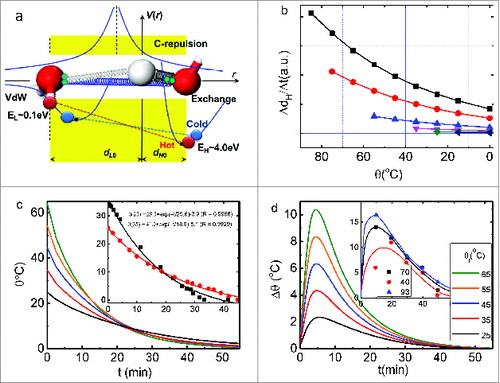Figures & data
Figure 1. (A) O:H‒O bond asymmetric, short-range potential paths, being analogous to springs and (B) O:H‒O bond memory effect - initial temperature dependence of the H‒O bond relaxation velocity at cooling. Numerical duplicates the measured (insets) initial temperature dependence of the (C) θ(θi, t) curvesCitation7 and (D) the skin-bulk temperature difference θ(θi, t) of water at cooling.Citation2 The dH0 and dL0 in (A) are the respective references at 4°C. Potentials include the O:H nonbond interaction (vdW of EL ∼0.1 eV bond energy; left-hand side), the H‒O bond exchange interaction (EH ∼ 4.0 eV; right-hand side), and the Coulomb repulsion between electron pairs (paired green dots) on adjacent oxygen atoms. These interactions dislocate O atoms in the same direction by different amounts with respect to the H+ origin under excitation. The relaxation proceeds along the O:H‒O bond potentials from hotter (red line linked spheres, labeled ‘hot’) to colder state (blue line linked spheres, labeled ‘cold’).

